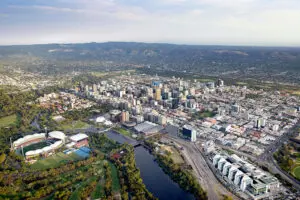The report identified that a complete rebuild of the stadium – funded publicly, rather than through a public-private partnership – was the best option, despite it being the second most expensive of four options put forward, at $2.71 billion. The report found that a full rebuild will provide the greatest value for money and meet the requirements for both the Olympics and the legacy outcomes that the state wishes to achieve from hosting the global event.
In 2018, the Stadium Taskforce Report posited that the Gabba would reach the end of its useful life by 2030, suggesting that the stadium would require a rebuild in the near future. Brisbane’s Olympic bid was announced at the end of 2019.
The design process for the new stadium will take place in 2024, with deconstruction taking place in 2025 and construction to start in 2026. The stadium is expected to be complete by 2030.
The Queensland government says the rebuilt Gabba will have better connectivity and accessibility, including wider entries and concourses, improved facilities for athletes and officials, cutting edge technology and lighting, international media facilities, improved facilities that will boost efficiency, and good connection to public transport and the surrounding precinct.
The stadium will target a 6 star green star sustainability rating and have 50,000 seats, with potential for more seats following the Olympics and a capacity of 70,000 for concerts. The current stadium has 42,000 seats.
“This isn’t just about a stadium upgrade. This is about anchoring an urban renewal project that will see Woolloongabba transformed like South Bank was transformed for Expo 88,” said Queensland’s deputy premier, Steven Miles
“We’re going for the best bang-for-buck and giving Queenslanders a new, modern stadium with all the finishes, because it is the best value for money, and it will deliver much more than a stadium.
“Having a modern, safe, accessible, and globally recognisable stadium will help draw more national and international events, and we know one concert can produce up to $5 million in visitor spending in our economy.
“The upgrade will create an estimated 2,300 jobs during the peak of construction in 2028, the economic impact will flow throughout the state.”




















